After a night at cheap chain motel in Appleton, Wisconsin, having descended from Door County the evening before, I was off to Baraboo, a little over a hundred miles on winding roads through the heart of the state. The day was sunny and the terrain rolling, the landscape agrarian. I saw a sign or two directing folks to such-and-such supper club, a Midwest (particularly in Wisconsin) institution that has nearly disappeared. These were sort of a combination affordable but nice dining establishment and social club. There might be entertainment and/or dancing, but food and socializing were the key elements.
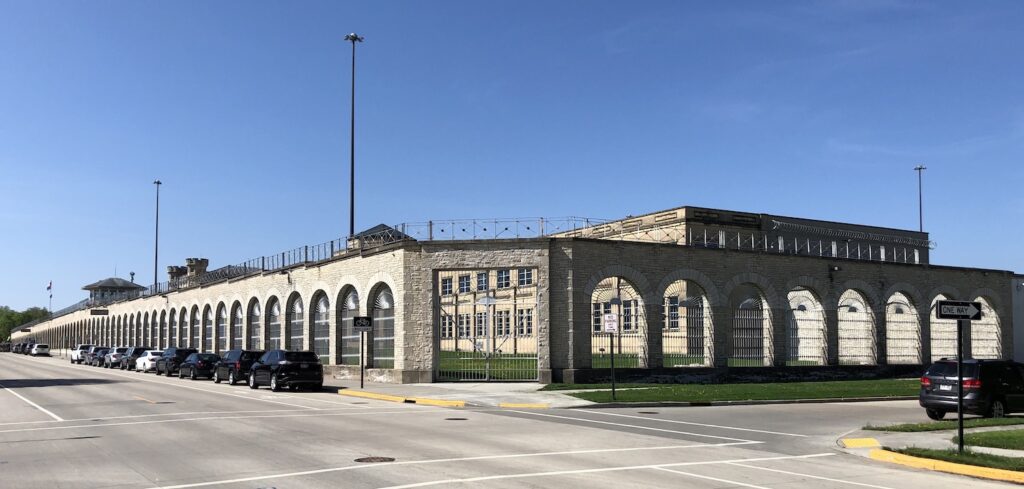
I reached the town of Waupun where I was changing highways, and I stumbled on an amazing structure I wish I could’ve explored further (and stopped to photograph properly). Parts of the castle-like Wisconsin State Prison complex were constructed in the 1850s and are still in use. The whole thing is listed in the National Register of Historic Places. I was meeting some folks at the Aldo Leopold Center and I still had quite a ways to go. I reached Portage–a town worth exploring another time, I thought–and headed onto Levee Road, one of Wisconsin’s “Rustic Roads,” which translates to your getting the experience of what most roads were like before World War II. After about eight miles of washboard jouncing, I pulled up to the Leopold Center.
Aldo Leopold is one of my heroes. Many decades ago I ran across his book A Sand County Almanac at a used book sale; intrigued by the title, I purchased it. When I got around to reading it, I was transfixed and continued to dip into its pages at regular intervals. Much later in graduate school, my professor used it as one of the textbooks for his class on environmental history. Leopold was a graceful and descriptive writer, who penned essays on his experiences and observations during his time he and his family were working to restore a wornout farm some 50 miles north of Madison along the Wisconsin River. During the week Leopold taught at the University of Wisconsin and on weekends headed up to his “sand farm.”

I met the folks who were going to give me a tour into the Shack, a National Historic Landmark. I had seen the Shack before on earlier visits, even scooped up gravel from the bank of the nearby river (which I still have, displayed in a wine glass) but I had never been inside. The structure and its surroundings have been undergoing a major restoration and stabilzation project. Whereas during my previous visits the Shack was not visible from the road, largely obscured by a forest of pines that Leopold had planted, it now was plain to see, with the prairie restoration well underway before it.
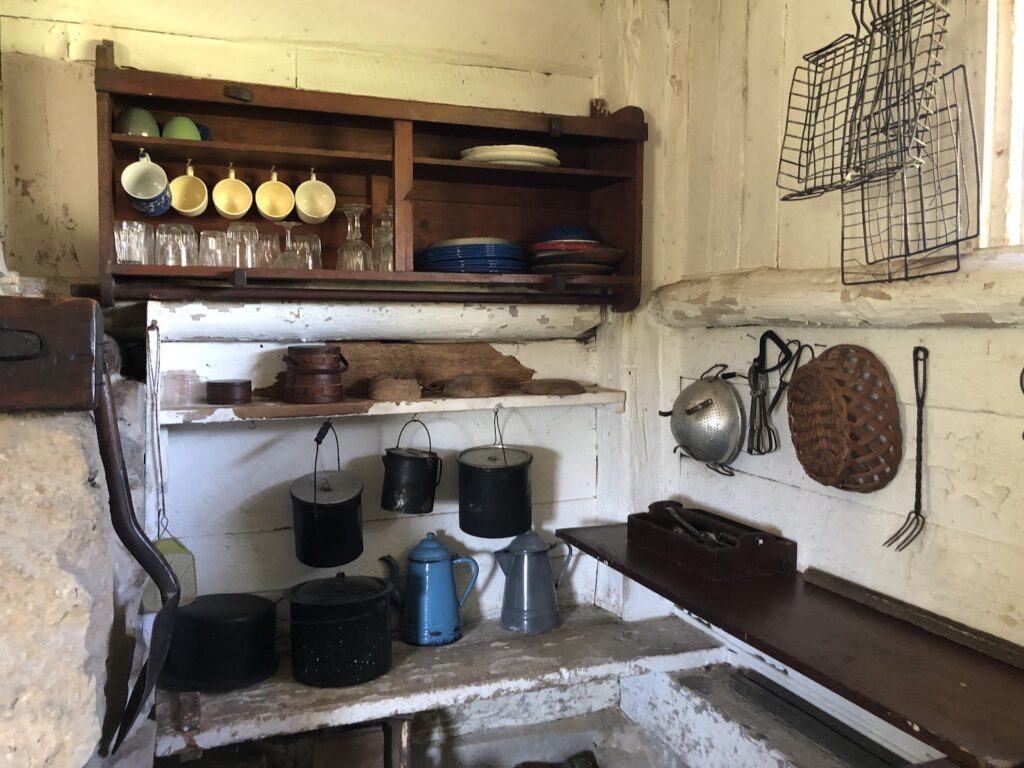
Did I mention what a glorious day it was? The bluest of skies. Sun like summer. Air clear and fresh. We went down to the river and talked of Leopold and cranes and wonder. I ran my fingers through the many-colored stones that form the gravel bed of the river. Heaven.
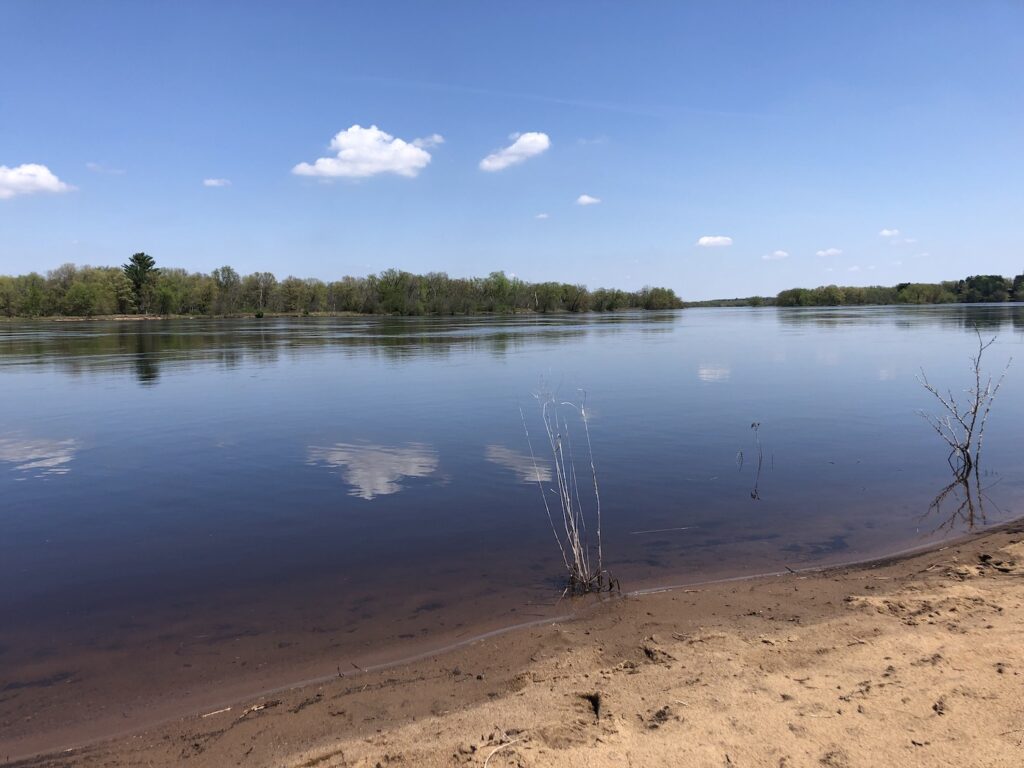
We returned to the center, talked more, and said our farewells, but as I was crossing the parking lot I encountered a turtle about which I had suspicions!

I gently guided it out of harm’s way and later confirmed that indeed, it was an endangered Blanding’s Turtle! I notified the folks at the Center. I had never seen one before except in captivity at Pokagon State Park in Indiana.
I headed a few miles west and stopped at the International Crane Foundation, once again to admire their refreshed and enlarged headquarters and exhibit spaces that had opened in 2021. I’ve been a member for many years. Pairs of all fifteen of the world’s cranes are on display, now in habitats that mimic–as best as can be done in a northern Midwest clime–the areas in which each lives in the wild. Cranes live on all continents except South America–and Antarctica, of course. North America claims two, the now multitudinous sandhills and the still-very-endangered whooping cranes. Many others around the world are endangered, too, and very good interpretative signage explains the status of each and what is being done to help. I took my time and wandered amongst them all.
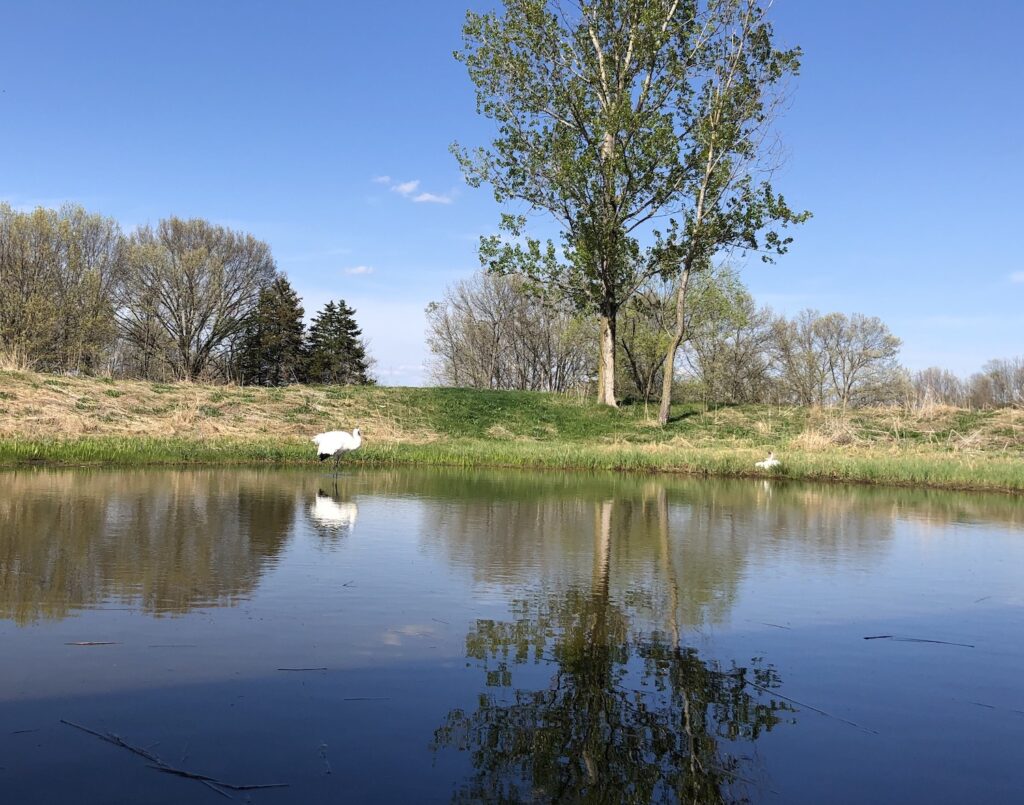
Famished by this time, I headed into Baraboo and checked into the 1950s-era Spinning Wheel Motel–my kind of place. The room was neat, clean, and comfortable. I headed downtown in search of supper; the Little Village Cafe looked intriguing, and the food proved to be delicious. The place appeared to have been a typical diner in the past, now scaled up. As there was still a bit of light left I took a drive up to the Dells, but its tackiness overwhelmed me. The Dells themselves, beautiful cliffs and fantastical formations along the Wisconsin River, are still there, of course. The previous fall I had taken a boat ride and enjoyed what millions of tourists have experienced for over 150 years. But the town’s garish signage, blinding lights, and plethora of oddity museums and tacky tee shirt shops seem to attract many people more than nature’s wonders. Ugh. Much of the route between Baraboo and the Dells on US12 is lined with these so-called attractions, but I discovered an old route back that took me almost directly to the motel through the lovely countryside.
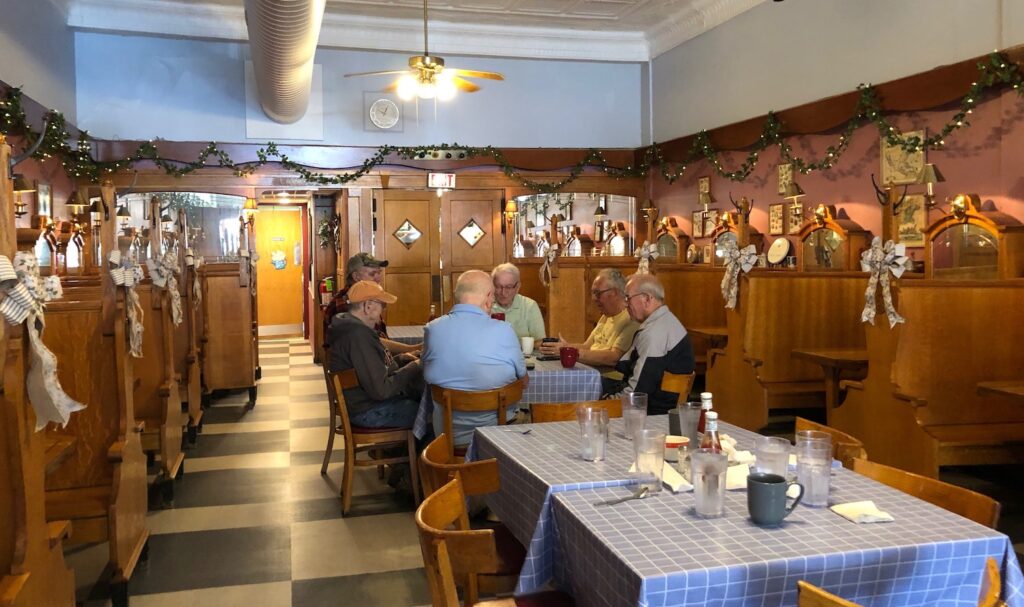
The next morning I headed to one of my favorite restaurants anywhere, Jen’s Alpine Cafe, a time warp into the 1930s. They offer fabulous breakfasts and the atmosphere is just. . . so cool! All decorated for spring, it looked lighter; I’ve never been up here this time of year. Delightful to experience spring all over again. I wrote for awhile and then took a walk around downtown Baraboo, with its spas and health food stores–and bars and tattoo parlors, mostly in historic buildings. What a mix of people inhabit this town! Working folks and roustabouts, scientists and environmentalists. And of course thousands of tourists, the majority probably for the Circus Museum (which I’ve never seen) and Devil’s Lake State Park, never mind some spillover from the Dells. A pleasant dreamy morning–it was difficult to leave.
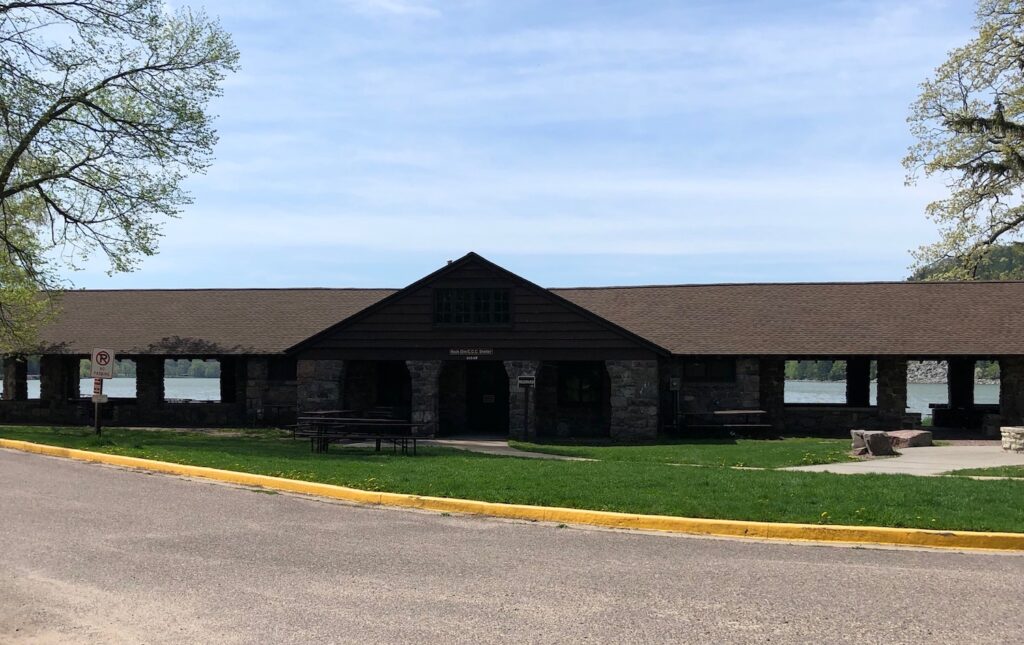
I wanted to stop in Devil’s Lake to check out the work of the Civilian Conservation Corps (CCC, the New Deal agency that employed two million young men to do conservation projects during the Great Depression) in the park. The last time I’d been in the area I purchased a book describing the work that took place during their long encampment at Devils Lake, and I was eager to see how much of it was still there and still in use. The park also held memories for me. Years back, when I lived in Chicago and my parents still dwelt in Michiana, they occasionally took a weekend trip to south central Wisconsin and visited Devil’s Lake, Mirror Lake, and just wandered the backroads (you see it comes naturally to me). A couple of times I went with them, discovering Baraboo, Lodi and the magical glacial moraine and sandstone bluffs. That was a LOT of years ago, and I couldn’t place any particular location in the park, but it all seemed vaguely familiar.
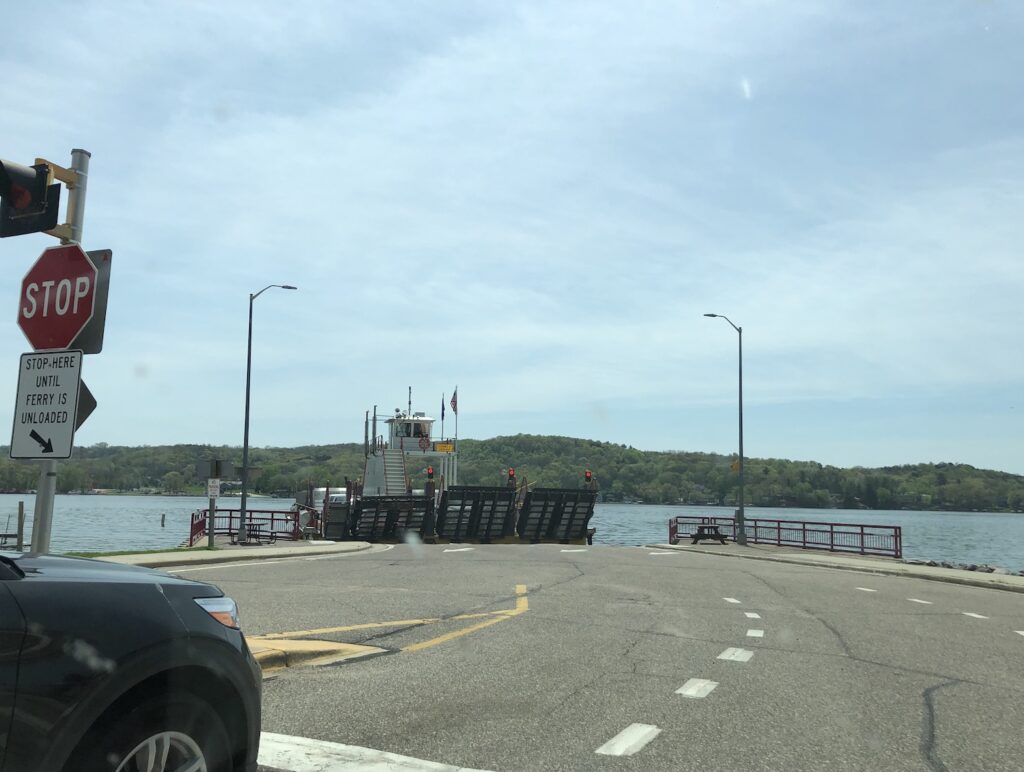
I had miles to go before I slept, so I finally left, continuing down Highway 113 toward Merrimac, where I hoped to catch the car ferry, although I had been warned that it might not be open yet. But it was. I do enjoy this experience of crossing the snaky Wisconsin River, a mile wide at this point. The ferry, called Colsac III (a merging of the two counties it links–Columbia and Sauk), has been in operation for a hundred years, although this particular boat, larger than its predecessors, dates to 2003. Free since 1933, it’s the only ferry that survives in the Wisconsin highway system. Many times it was threatened with replacement by a bridge, and in the late 1960s it was thought that the new interstate bridges not that far off would render it obsolete, but the ferry is much loved and likely will remain. I always imagine that Aldo Leopold and his family must have taken the same ferry to get to the Shack from Madison.
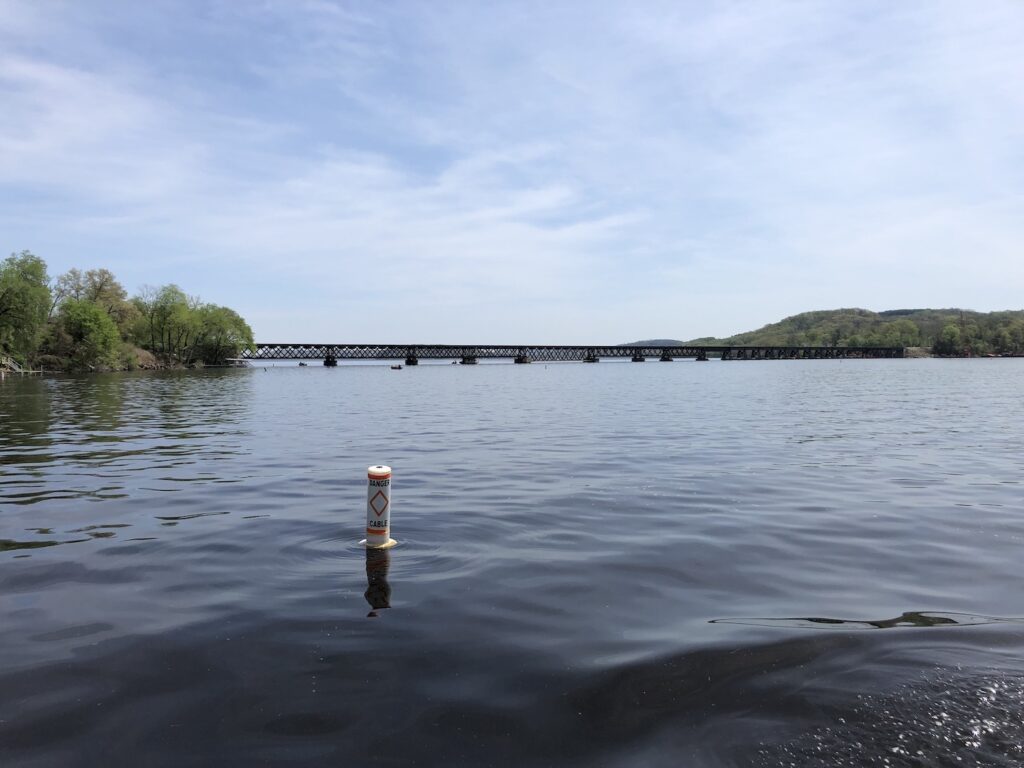
Not far south past the ferry is the charming town of Lodi, a place I remember seeing with my parents all those years ago. Lodi is noted for Susie the Duck, originally a female mallard that in 1948 nested in a WPA-built stone planter along the creek that runs through town. There have been many mallards since, and forty years ago Lodi started an annual Susie the Duck festival, which has grown into quite the regional attraction! I stopped for a bit at a favorite place, the Buttercream Bakery (and ice cream shop) overlooking Spring Creek.
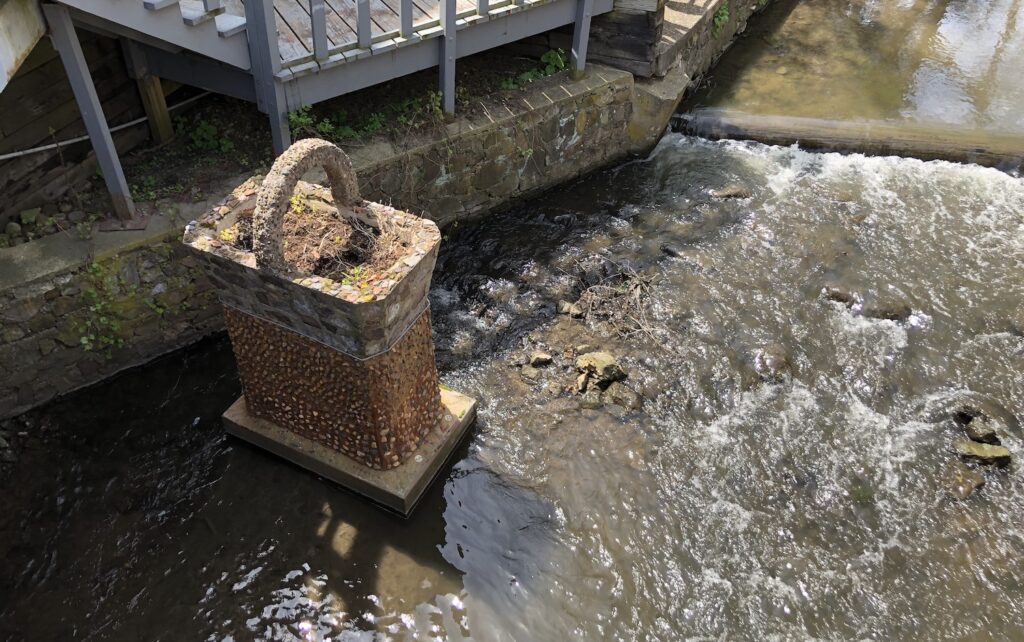
Yes, miles to go before I slept, so onward, save for a stop at my favorite cheese shop (this IS Wisconsin, after all), Ehlenbach’s Cheese Chalet, third-generation family-owned. Their morel mushroom and leek jack is pure magic. At Janesville I decided to take old US14, which was lovely in its early spring garb. I marveled how clean the roadsides were, consistent throughout the state, unlike those in Indiana, sad to say. US14 sidles into Illinois at an angle until a few miles north of it, but after I crossed the border I made some poor decisions. They led me into that sometimes dreary endless prairie of east central Illinois where the roads seem to go on forever. I also tend to forget how very north Illinois extends above Indiana’s northern reaches.
More poor choices took me to I-65 after dark and numerous traffic jams from construction. I kept my cool, mostly, not wanting to lose the wonder, peace, and joy of Sand County.
